Pestalozzi To Present: Head, Heart And Hands Shaping Education Through The Ages

In this second article in the series of four on creativity in education, we shall probe into the key personalities behind the history of creativity in education and why it is important for young people to be creative at school.
A Very Brief History Of Creativity In Education
Creativity has had an active and flourishing part to play in educational history. In Ancient Greek civilizations, philosophers like Socrates and Plato were big believers that education should encourage critical thinking, questioning, and exploration of ideas and emphasised the importance of nurturing well-rounded individuals with creative thinking skills.

During the Renaissance and Enlightenment periods, there was a renewed focus on individualism, curiosity, and creativity with the legendary ‘thinkers’ like Leonardo da Vinci embodying the idea of combining artistic and scientific creativity.
In the 1800s, Swiss Johann H. Pestalozzi, referred to as the ‘father of modern education’, was a significant figure in the promotion of creativity in education. He proposed a holistic and child-centred approach to learning, emphasising the importance of the arts in order to recognise its link with emotions, social well-being and cognitive abilities. He also emphasised the value of play in the development and inner growth of the child.
Pestalozzi believed the ‘whole’ child should be trained physically, psychologically, and emotionally, known as the Pestalozzi principles of ‘learning by head, heart and hands’, and was also a proponent of the advancement of good character and morality. The former pastor developed the ‘Pestalozzi Method’, in which he argued that children should learn through play and participation in ‘experiential learning’ using activities such as drawing, writing and music, supported by lots of outdoor tasks including physical exercise, trips and so on, leading to a ‘well-rounded’ education. At the heart, he encouraged critical thinking and creativity.
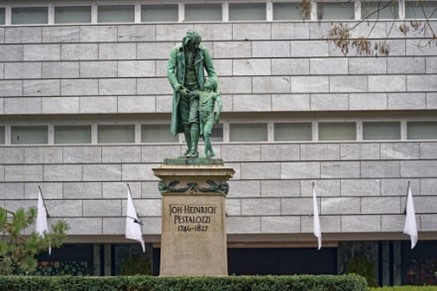
Johann H Pestalozzi
Then in the late 19th and early 20th centuries, educational reformers like American John Dewey, influenced by Pestalozzi, advocated for ‘student-centred learning’ that focused on experiential learning, problem-solving, and creative expression.
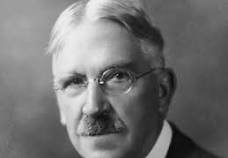 John Dewey
John Dewey
Dewey believed that education should enable students to think critically and apply knowledge in practical ways. Art education was viewed as one of the conduits to foster creativity. He favoured reducing the restrictive rote learning style of teaching and replacing it with direct experience, inquiry and play. The like-minded visionary Friedrich Fröbel, founder of the kindergarten, believed that play and creative activities were essential for early childhood development; like Maria Montessori and Rudolf Steiner, he introduced alternative educational methods that emphasised creativity, curiosity, individuality, and hands-on learning.
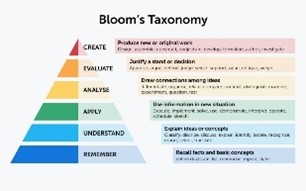 In the 1950s, Benjamin Bloom developed his cognitive taxonomy, a classification of educational learning objectives, which recognises creativity as the highest level of thinking skill and says that students must have a strong foundation in all other skills in order to tackle problems requiring application of this most complex cognitive level. | There is a learning process which promotes a problem-solving environment; before creating, we must have remembered, understood, applied, analysed and evaluated a concept. Bloom concluded that all children can learn at a high level, that is be creative, if they are given sufficient support and practice. |
The Importance Of Creativity For Young People Today
As we have seen, there has been a lot of heavyweight and thoughtful academic support for creativity in education through history. However, it is recognised to be a complex, difficult skill for children to develop.
Although, rather worryingly, there has been a steady decline in creativity in young people, research has shown that personal creativity has the potential for long term benefits, not just for the individual to flourish in all domains of life, from personal development to professional success, but also for society to improve through innovation.
The creative life path begins in childhood and the process must start at school. At a young age it can spur emotional development as children, through trial and error, exploring and developing life skills, in particular learning expression through arts and music. One of the loudest advocates for creativity in education in recent years, through his book ‘Out Of Our Minds: Learning To Be Creative’, has been the legendary Sir Ken Robinson, who argued that creativity is a function of everything we do and educating for creativity should permeate the whole school curriculum. Robinson asserted that creativity is just as important as literacy and should have the same status, but, sadly, it doesn’t.
According to academics Plucker and Beghetto, learning to be creative at school is a ‘long-term investment’ and creativity is a key component of ‘health, social and emotional well-being and scholastic and adult success.’

The Durham Commission extends Robinson’s ideas, believing that creativity is strengthened with knowledge: “There need be no conflict between knowledge and creativity in our education system. Indeed, the opposite is the case – creativity is founded on deep understanding.”
Tim Lenuig, Chief Scientific Adviser at the Department for Education, concords that creative thinking should be supported by ‘deep knowledge’, so that literacy and numeracy, developed at school, can enhance the prospects of new discoveries and connections, which can lead to ‘genius’ ideas in employment or adulthood.
He cites one such example as the invention of the steam engine by Thomas Newcomen, who used his understanding of physics to make the breakthrough insight which enabled the British to “power the factories, get water out of the mines, and get locomotives running across the country and steam ships taking goods to the furthest corners of the globe”. Without extensive knowledge innovation wouldn’t have been possible.
Creativity is not just limited to the creative industries; in business, invention and value generation make creativity a fundamental component for entrepreneurial success and, at macro level, research underscores that creativity has the potential to transform the entire economy and address societal challenges like social mobility.
The Impression Is The Tortured Soul
The relationship between creativity and mental health is very complex and nuanced. On the one hand, there is an impression that looking at some eminent historical figures, extreme creativity or ‘genius’ is associated with a tortured soul; think of examples like Van Gogh, Paul Gascoigne and Alexander McQueen. However, this is a small sample size. There have been extensive works carried out which have determined a link between creative genius and higher levels of mental illness, especially creators in the arts; Layard being one who confirmed a link between creativity and mental instability , confirming that famous artists and writers were more likely to suffer depression.
In General, The Benefits Are Positive
Despite the negative effects at the extremes, probably connected to Pinker’s identification of ‘creative worrying’, through which the genius cannot repress feelings and their “epiphany is not a masterstroke but a tweaking of an earlier attempt. They revise endlessly, gradually closing in on their ideal.” for most people creativity can have a huge positive benefit on mental health. Paul Dolan, aka ‘Professor Happy’, author of Happiness by Design, found an association between creativity and happiness for the vast majority of people. Creative pursuits can generate a major positive effect on well-being, self-esteem and happiness. For example, finally learning that piano piece or writing a love poem, can result in a great sense of achievement.

Creativity Is One Of The Key Skills For Employment In The Future
The looming wave of technological advancement, driven by AI and automation, threatens to disrupt employment on an unprecedented scale as jobs are “lost or degraded”. This calls for a significant shift in the skills expected from employees in the future.
The World Economic Forum’s (WEF) global survey on the skills companies believe they will require from employees is shown in the chart below and reveals that creative thinking is the number one skill sought after for the future. It is widely recognised that creative thinking is a key driver of economic growth and innovation. Hence encouraging creativity in industries is a way to revolutionise the wider economy, especially through the innovative use of technology. This is why creativity is emerging as one of the most sought-after clusters of skills for all competitive businesses.
The top skills required right now are on the left and the skills which are on the rise are on the right.

So, what is this ‘creative thinking’ that so many employers will covet? According to Oxford University: “Creative thinking is a way of looking at problems or situations from a fresh perspective and can be stimulated both by an unstructured process such as brainstorming, and by a structured process such as lateral thinking.” Creative thinking is present in all areas of life and is underpinned by a large number of other skills such as problem-solving, perseverance, resilience, imagination, communication, curiosity, experimentation, critical thinking and collaboration.
The first two skills on the WEF wish list, creative thinking and analytical thinking, are ‘cognitive’ skills, that is, requiring thinking. Whilst the next group which feature strongly, namely resilience, motivation, self-awareness, curiosity etc. come under the banner of ‘behavioural’ skills or ‘self-efficacy’. Self-efficacy is more commonly known as ‘self-belief’ and is considered to be a ‘multiplier’; through visualisation and achieving goals, the process makes all other skills possible to master. ‘Interpersonal’ skills, like empathy and active listening and leadership and social influence, feature in the top ten now and are expected to remain very important in human interactions in the future as interactions.
In summary, apart from ‘hard’ tech knowledge, the WEF reckon that the most highly valued employment skills will be “socio-emotional skills related to self-efficacy and continuous learning”, that is, the ingredients which form Emotional Intelligence (EQ ) and, also, the components and essence of being a human being.
| In support of this, a recent IBM poll of 1,500 CEOs identified creativity as the No 1 “Leadership Competency” of the future for success in business. |  |
Creativity Through Kloodle Will Fill The Skills Gap
Throughout history, education has recognised the role of creativity as vital with intellectual thinkers like Socrates, advocating for critical thinking and holistic learning, and Leonardo da Vinci, celebrating individualism and creativity. In the modern educational era, from Pestalozzi to present, progressive champions like Dewey lauded student-centred learning, emphasising experiential learning and creative expression.
From micro to macro, creativity spans personal development, societal well-being, and economic prosperity and in order to meet the evolving demands of the future workforce, improving productivity and driving economic growth, creativity should have a critical status in education; this is being recognised to the extent that there have been governmental calls for creative thinking to be prioritised,.
‘Skills gaps’ are anticipated unless young individuals are equipped with the necessary creative skills, which are integrated with so many other attributes like problem-solving and critical thinking. Building self-awareness around this should begin at school and this is what Kloodle, the digital skills and character infrastructure, has been designed to do, allowing young people to develop strong EQ, the cornerstone of human capability. They can demonstrate that they possess the skills, self-efficacy and lifelong employability through the activities they participate in and reflect on over their school lives and beyond. Through the lifelong adaptation of new skills, they can bridge the talent gap in the future job market.
The education system must focus on nurturing creative thinking and practice in schools, to enhance employability and social mobility and, together with literacy and numeracy, the foundation for ‘deep knowledge’, creativity forms the bedrock of a robust education system.
By Neil Wolstenholme, Chairman of Kloodle
FE News on the go…
Welcome to FE News on the go, the podcast that delivers exclusive articles from the world of further education straight to your ears.
We are experimenting with Artificial Intelligence to make our exclusive articles even more accessible while also automating the process for our team of project managers.
In each episode, our thought leaders and sector influencers will delve into the most pressing issues facing the FE sector, offering their insights and analysis on the latest news, trends, and developments.

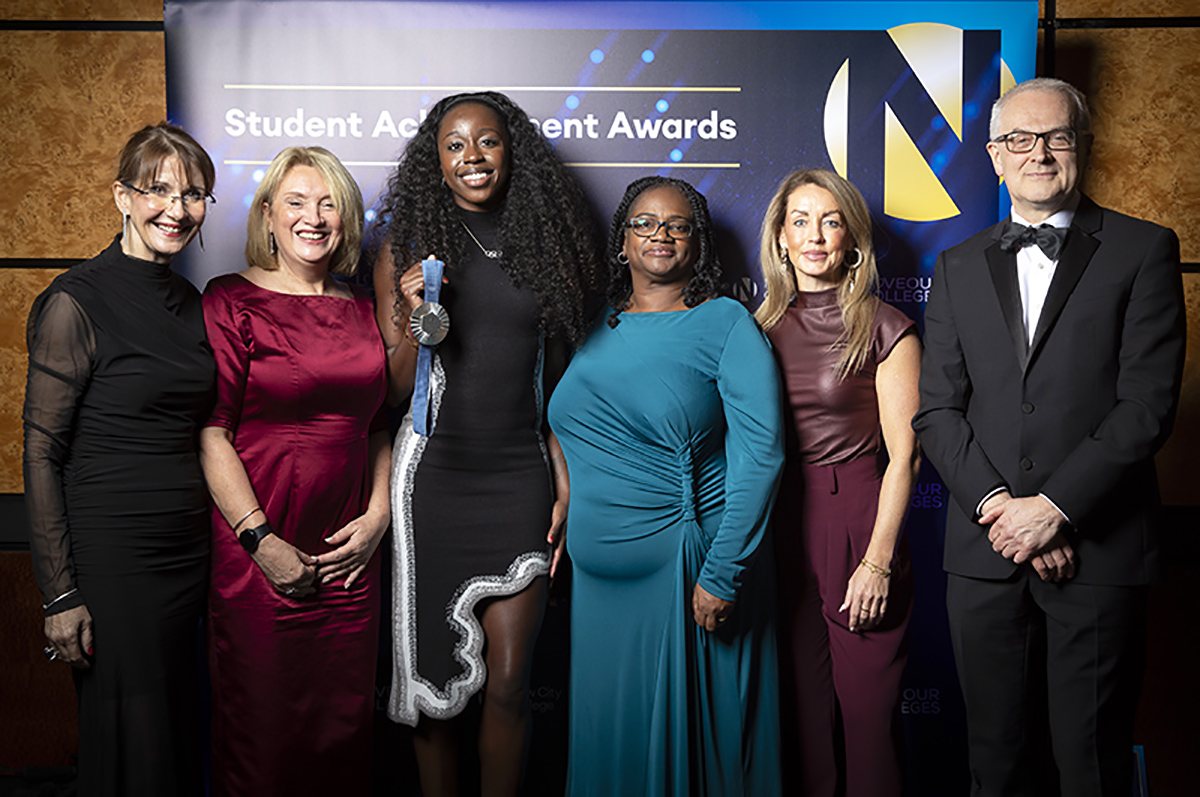






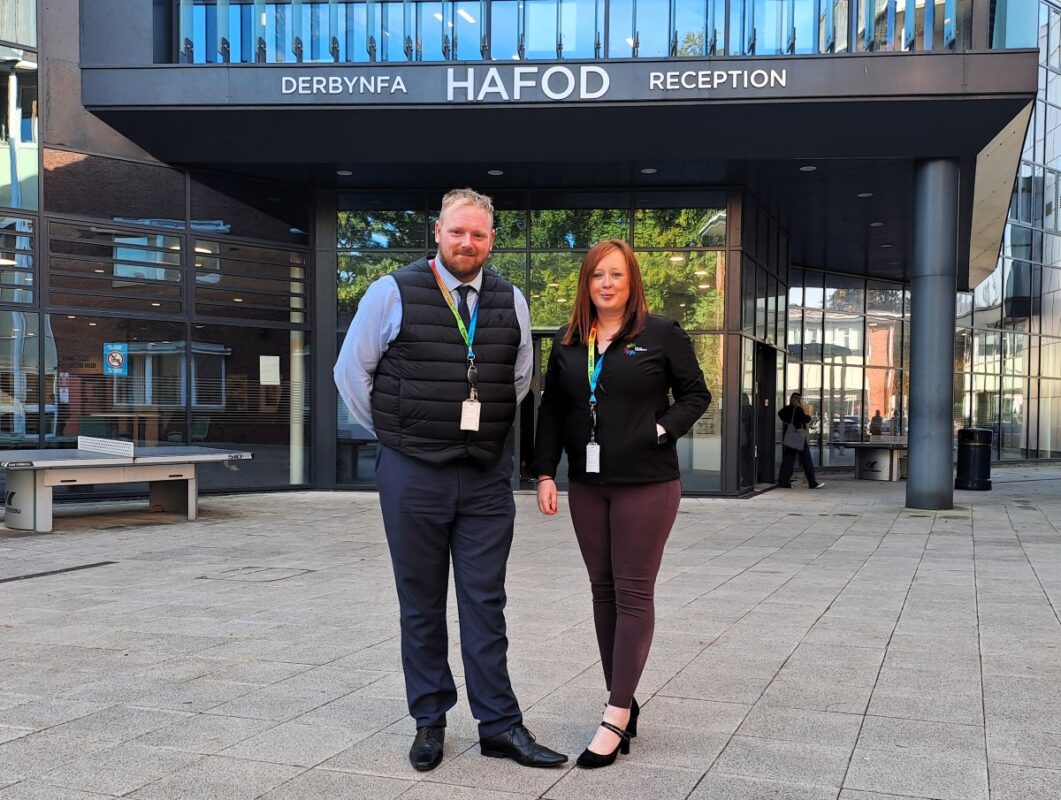
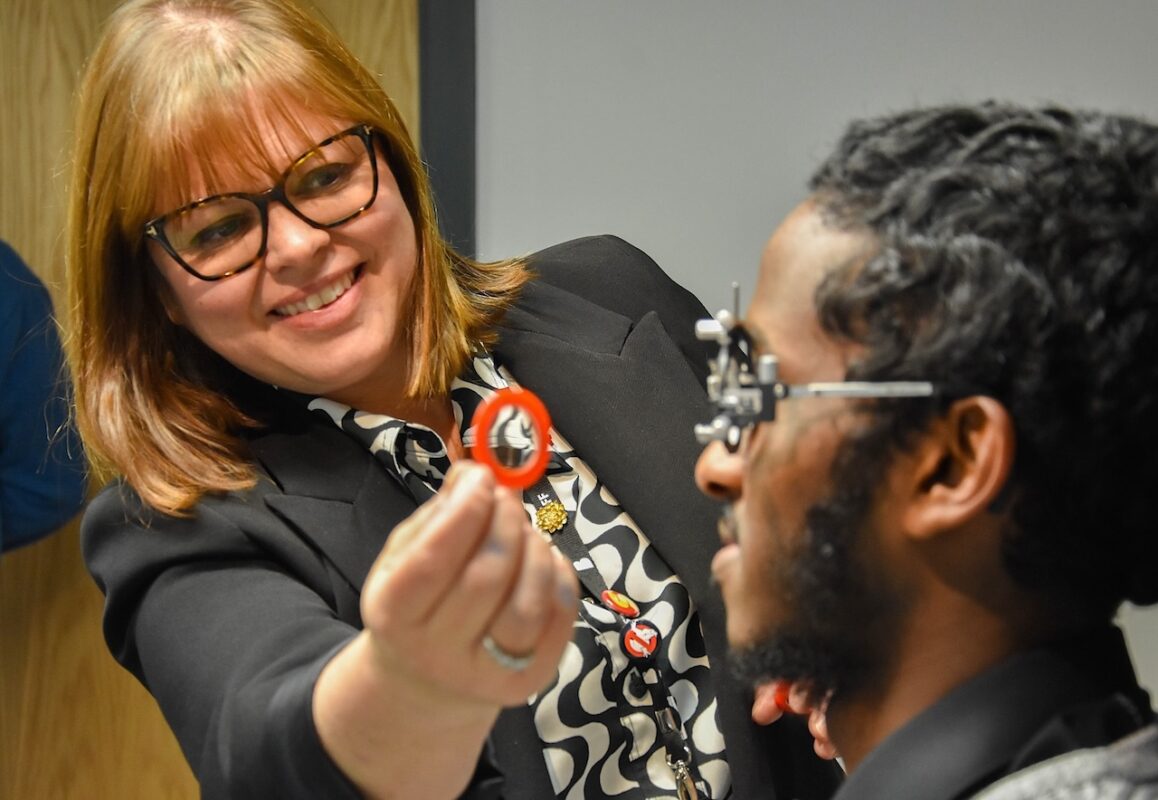

Responses